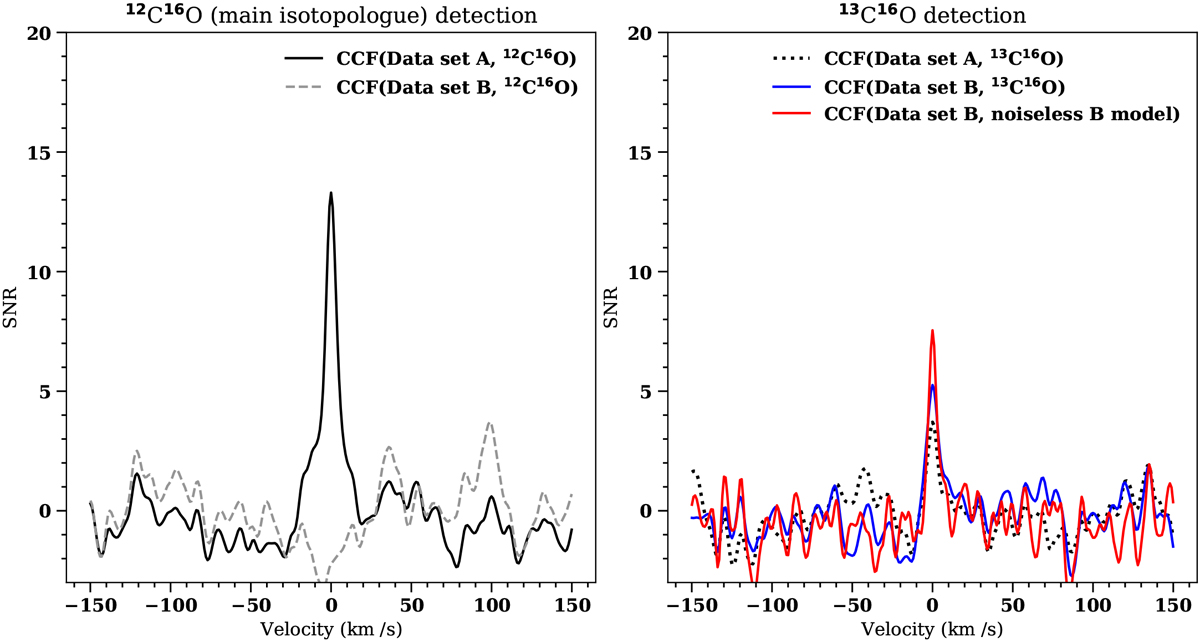Fig. 3.

Results from simulated observations of HD 179949 b consisting of 100 spectra with an S/N* of 200 each, with a R = 100 000 spectrograph covering the wavelength range λ = 2.32–2.45 μm. Left panel: cross-correlation function (CCF) using a pure 12C16O template spectrum on data set A (black solid line) which contains all species, and data set B (grey dashed line) which contains lines of 13C16O only. Data set A gives a signal with an S/N of ~13, while the main isotope, as expected, is not detected in data set B. Right panel: CCF using a pure 13C16O template spectrum on data set A (black dotted line) and data set B (solid blue line). In addition, we show the CCF using a noiseless telluric-free model for data set B as a template (red solid line). The 13C16O isotope is detected at an S/N of ~3.5 and ~5 in data set A and B, respectively. By using the perfect noiseless input model as a template, 13C16O’s detection S/N is further increased to an S/N of ~7. To reach the latter significance, the planet atmosphere needs to be well constrained.
Current usage metrics show cumulative count of Article Views (full-text article views including HTML views, PDF and ePub downloads, according to the available data) and Abstracts Views on Vision4Press platform.
Data correspond to usage on the plateform after 2015. The current usage metrics is available 48-96 hours after online publication and is updated daily on week days.
Initial download of the metrics may take a while.


